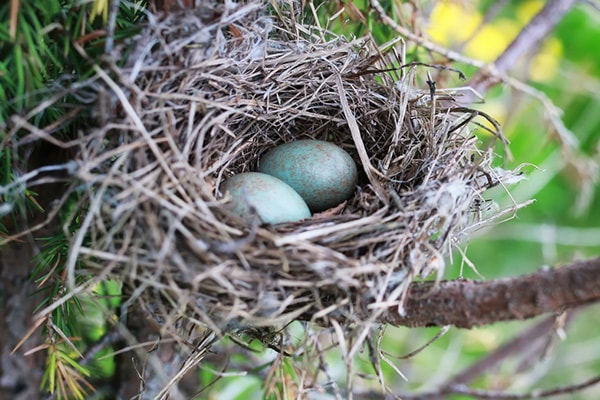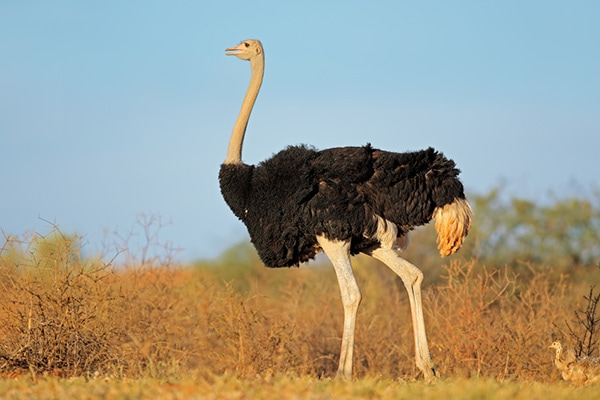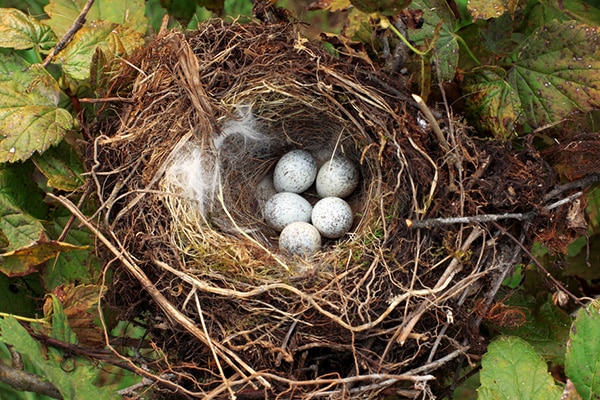Contents
If you’ve been a bird watcher for a long time, you’ve probably observed how bird clutch sizes vary from each other. Some birds lay as few as one egg each, while others lay as many as 20 or more eggs.
But, have you ever wondered why this is so?
It seems that birds lay eggs depending on the number that will produce the maximum number of offspring. This fact is then influenced by several factors like the birds’ habitat, health, food source, etc. Researchers have spent a lot of time studying bird clutch sizes, and there were several theories they came up with.
In this article, we’ll discuss what clutch size is and the several different theories on why birds have different clutch sizes. This includes:
- Food limitation and nest predation hypothesis
- Skutch’s hypothesis
- Ashmole’s hypothesis
- Egg-viability hypothesis
- Spring bloom or competition hypothesis
- Day length hypothesis
- Prey diversity hypothesis
On top of that, we’ll look at other factors that seem to affect the bird’s clutch size and answer some FAQs related to this topic.
So, if you’re interested to know more about why birds have different clutch sizes, read on…
What Is Clutch Size?
Clutch size refers to the number of eggs a bird lays in every nesting attempt. While most birds nest only once a year, some nest more than once to increase their population’s chances of growing.

For some reason, bird clutch sizes have always been different from each bird, whether they’re of the same bird species or not.
With research, researchers found that birds practice two distinct reproductive tactics called nidicolous and nidifugous.
Nidicolous is when chicks hatch out featherless, and their eyes are closed. In this situation, chicks would need lots of parental care, including feeding them. In contrast to this, nidifugous species hatch out of their eggs covered and their eyes open. The only care their parents give them is protecting them from predators and teaching them where to feed.
Another thing noticed by researchers is that birds can also be classified as determinate and indeterminate layers.
Determinate layers are birds programmed to lay a specific number of eggs. This means that if they lose a number of eggs, they won’t be able to replace any lost eggs. On the other hand, indeterminate layers can lay as many eggs as they need.
These two seem to have a significant influence on how big the birds’ clutch size is. And these findings are what gave birth to the different theories that answer the question of why birds have different clutch sizes.
Theories On Why Birds Have Different Clutch Sizes
There are seven theories that somehow have the answer to why birds lay different numbers of eggs. These are:
- Food limitation and nest predation hypothesis
- Skutch’s hypothesis
- Ashmole’s hypothesis
- Egg-viability hypothesis
- Spring bloom or competition hypothesis
- Day length hypothesis
- Prey diversity hypothesis
And here, we’ll take a look at each of them one by one…
Food Limitation and Nest Predation Hypothesis
First, we have the food limitation and nest predation hypothesis. This hypothesis was formulated by David Lack and is one of the most popular theories out there.
Lack’s observed a direct relationship between the latitude and the clutch size of birds. He noted that bird species near the equator lay more eggs than those further away from the equator.
According to Lack, this is most likely because there are fewer food resources and nest predators near the equator.
Since there’s a shortage of food supply, parent birds have to lay more eggs to increase the number of their young birds to survive. Also, it’s easier for them to lay more eggs, as predators are scarce, and they won’t be easily detected.
In contrast, birds in areas with more predators lay fewer eggs to decrease the chance of predators spotting them. This also reduces the time they need to fly around and find something to feed their young.
Skutch’s Hypothesis
The next hypothesis is Skutch’s hypothesis, which is also very similar to the nest predation hypothesis. This was theorized by a group of researchers in Panama as they compared bird populations in Arizona and Argentina.
It’s found that clutch size is larger in Arizona than in Argentina, mainly because there are fewer predators in Arizona. This made it easier for birds to deliver food to their young fast.
Bird populations in areas with more predators, on the other hand, had to lay fewer eggs to reduce the number of mouths they had to feed.
Ashmole’s Hypothesis
Ashmole’s hypothesis believes that the clutch size of birds is related to the competition with migrant birds.
Since the competition is bigger, there’s a big fight among food resources, which often leads to a higher mortality rate for resident birds. As a result, surviving birds can now lay more eggs as the competition is once again reduced.
Egg-Viability Hypothesis
The next hypothesis is the egg-viability hypothesis, which states that temperature has a direct effect on the number of eggs birds lay. It seems that higher temperatures will force birds to lay fewer eggs because even if they lay more, most of those eggs won’t hatch.
This is why birds with open nests lay their eggs at lower latitudes to protect them from high temperatures. They also tend to incubate early, even before clutch completion, resulting in a smaller clutch size.
Day Length Hypothesis
There’s also what we call the day length hypothesis, wherein the birds’ clutch size is influenced by the day length.
During the late spring and summer, days tend to be longer at higher latitudes. And since birds have more time to go out and search for food, they can feed a larger number of young, compared to birds at lower latitudes.
But of course, if the bird species are nocturnal, longer daytime might result in smaller clutch size as their time to search for food is also lessened.
Other Factors That Influence Avian Clutch Size
Aside from these theories above, researchers have also seen other factors that influence avian clutch size:
- Nest Type: We’ve mentioned this briefly above. Open nesters expose their eggs to higher temperatures and predators, which means a smaller clutch size would be better for them. Whereas cavity nesters are more protected from these two factors.
- Age and Health of the Female Bird: Some studies say that the age and health of the female bird influence the size of their clutch, too. When they’re weak, they produce fewer eggs as they don’t have much energy to produce more.
- High Population Density: When female birds breed in colonies or areas with high bird populations, they also lay fewer eggs.
And those are some of the theories on why birds have different clutch sizes.
FAQs On Why Do Birds Have Different Clutch Sizes?
What bird has the largest clutch?
Bird clutch sizes can vary yearly depending on the factors stated above. However, it is said that Ostriches can lay up to 50 eggs per nest, which is the largest clutch size researchers have recorded.

But in general, bird game species lay the most eggs, reaching 15-20 eggs per nesting season.
Why is clutch size important?
Clutch size is essential for birds as it is what helps their population grow. The parent birds’ goal is to lay a specific number of eggs that will yield them the most number of offspring. This means that they will only lay eggs if they know that the chances of survival for those eggs are high.
Which bird lays only one egg in a year?
Unlike most birds, Laysan albatrosses are the only birds that lay one egg per year. No one knows why, but it’s certainly a feat that people watch out for.
What bird species lay the largest and smallest eggs?
As one of the largest birds in the world, ostriches lay the largest egg out of all bird species. In contrast, hummingbirds lay the smallest eggs in the whole bird kingdom.
Final Thoughts On Why Birds Have Different Clutch Sizes
As you can see, there’s no definite reason as to why birds have different clutch sizes. The theories are based on the researcher’s observation, and they have pointed the following factors to be the reason:
- Abundance of food
- Nest predators
- Temperature
- Bird competition
- Day length
- Time of the year
- Nest Type
- Age and Health of the female bird
- Bird population density
There’s no way to know which of these is the exact reason, but one thing is for sure, birds lay eggs depending on which would help them produce more offspring.

